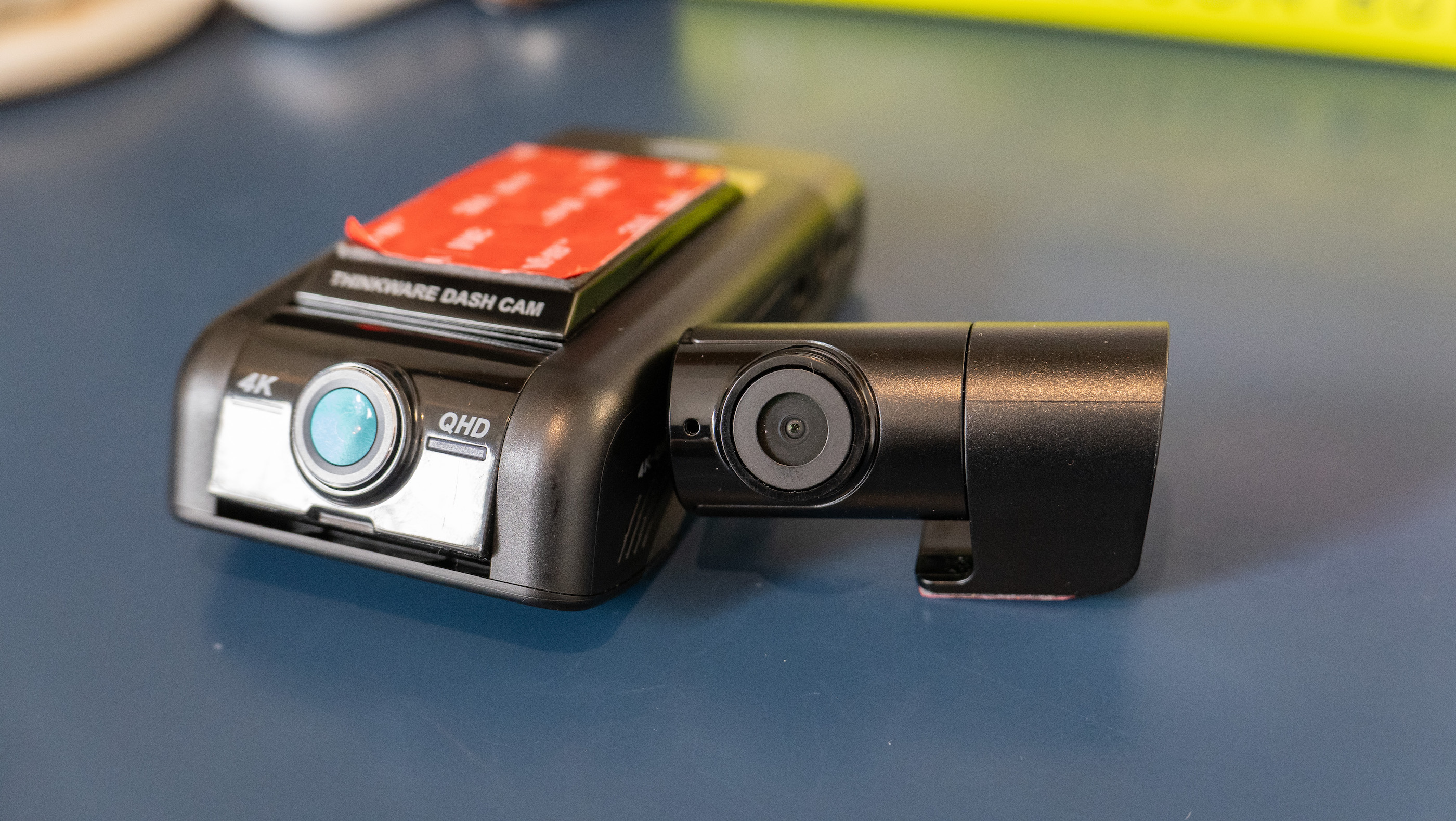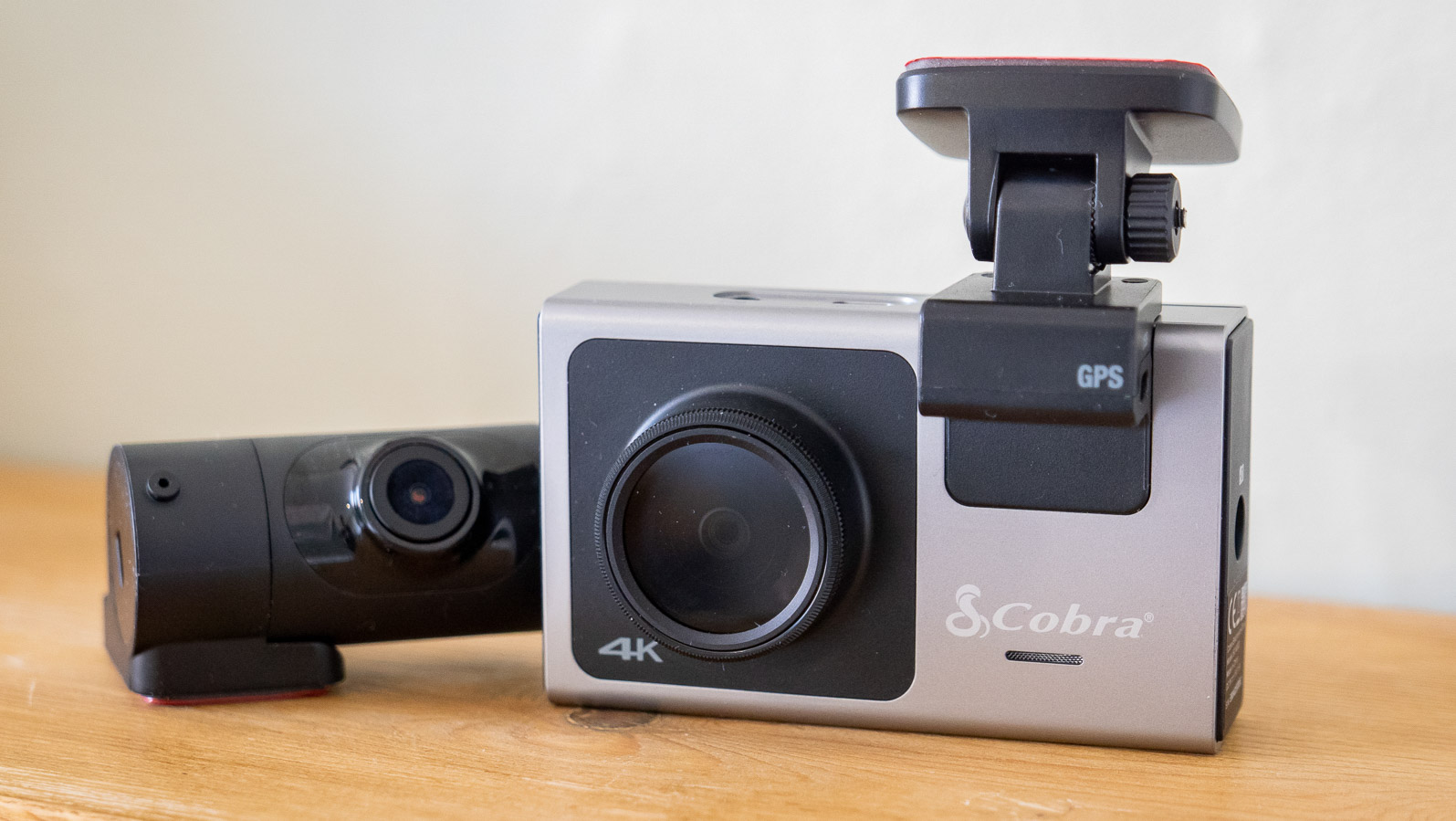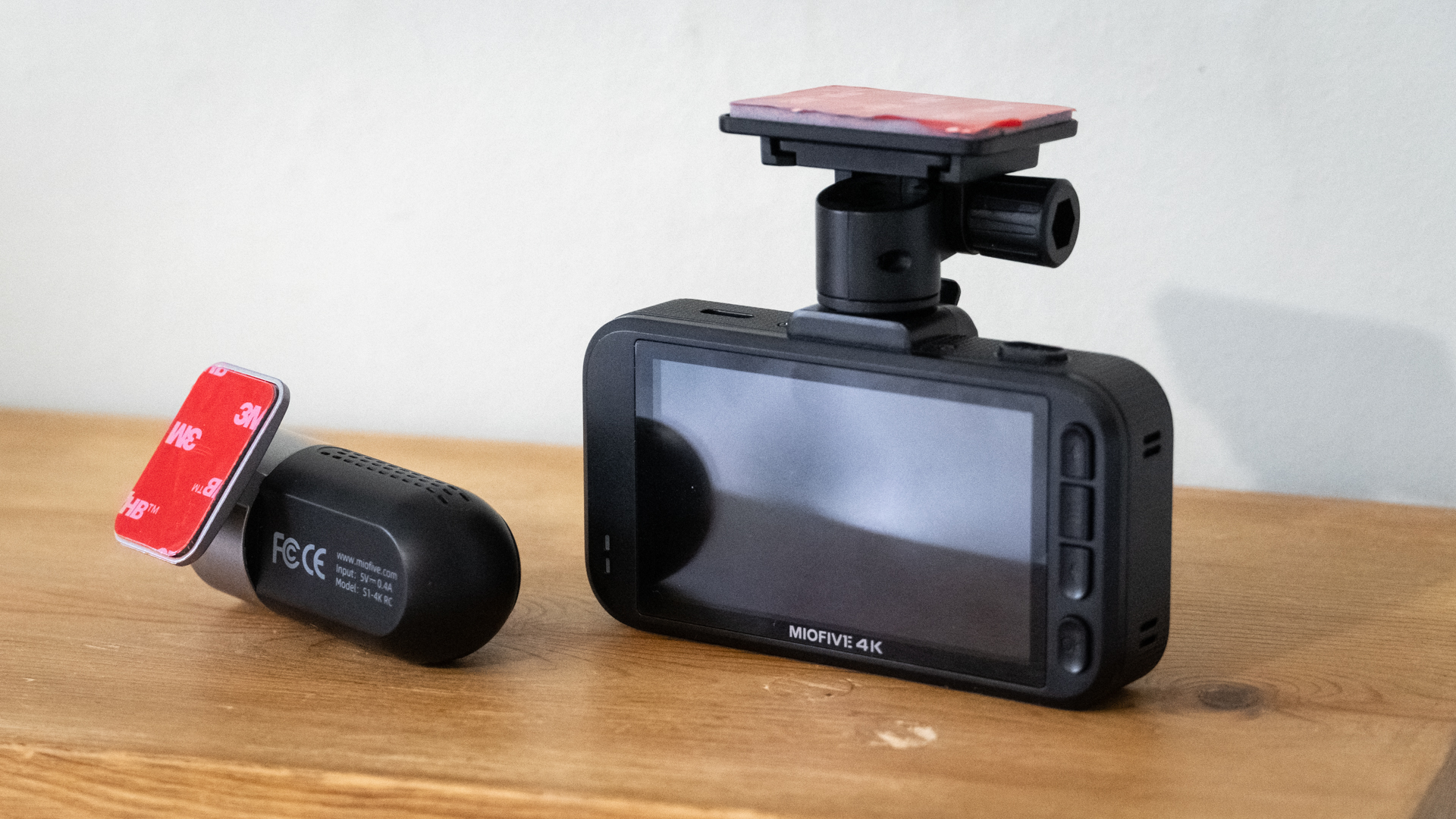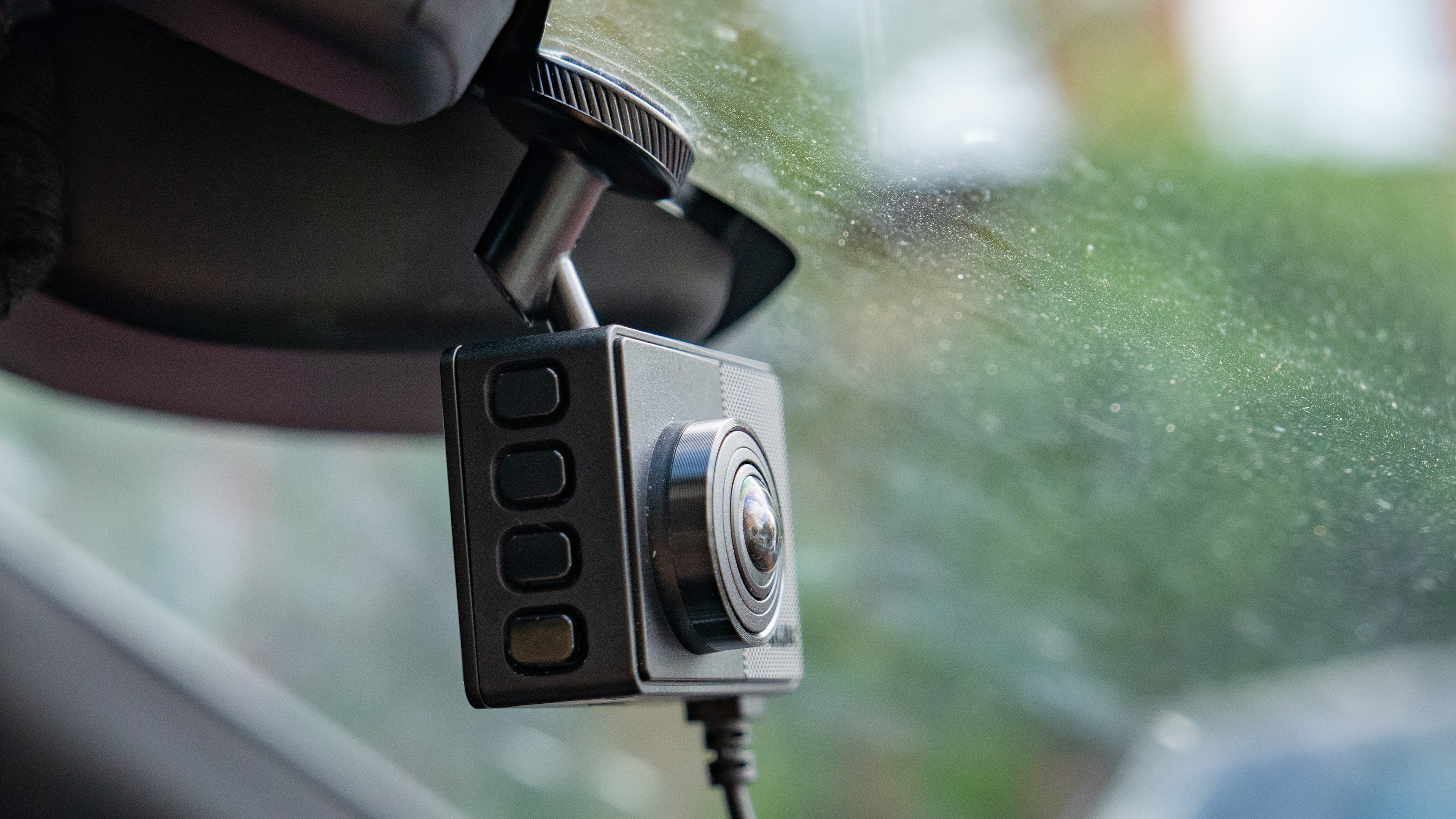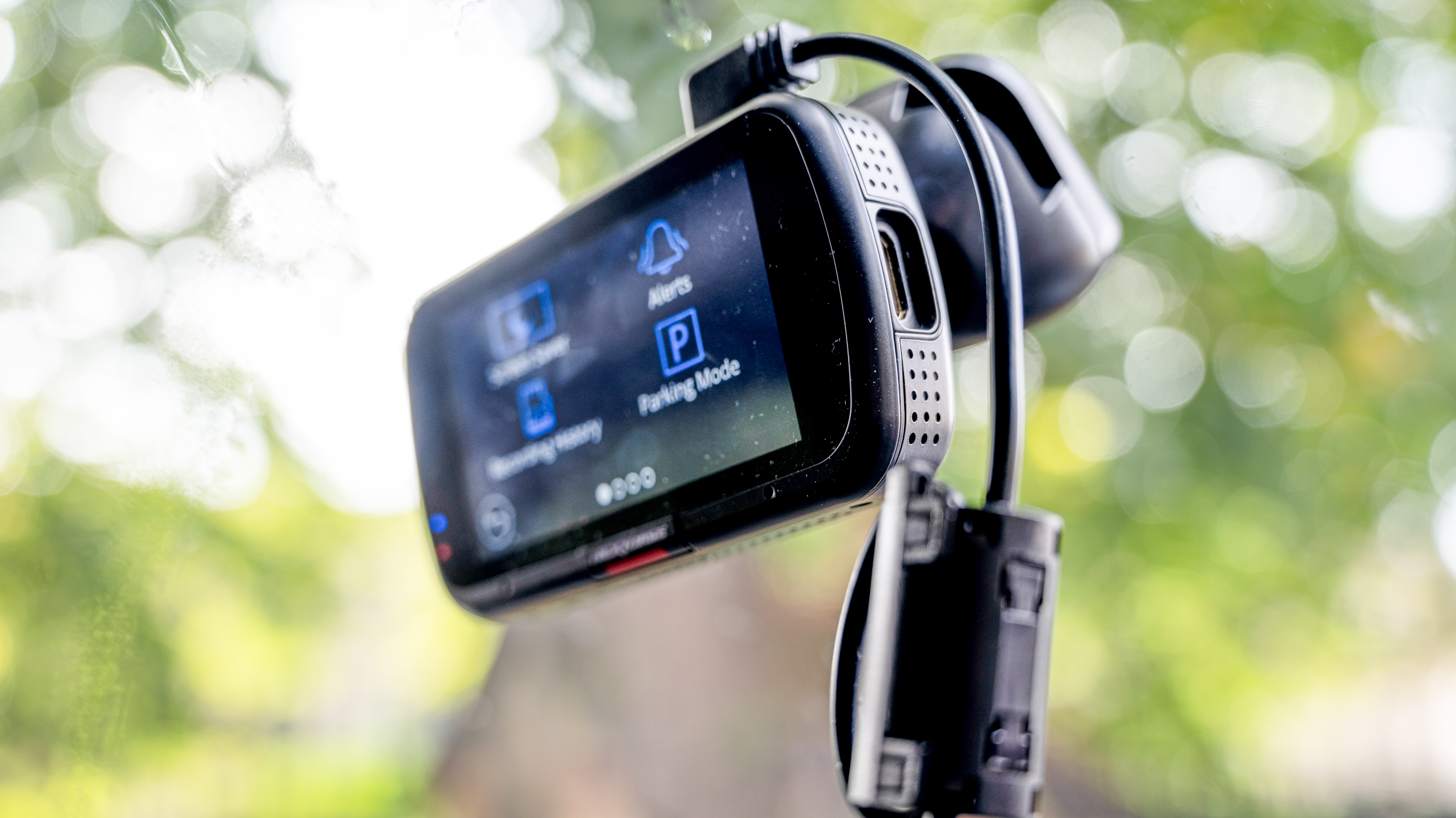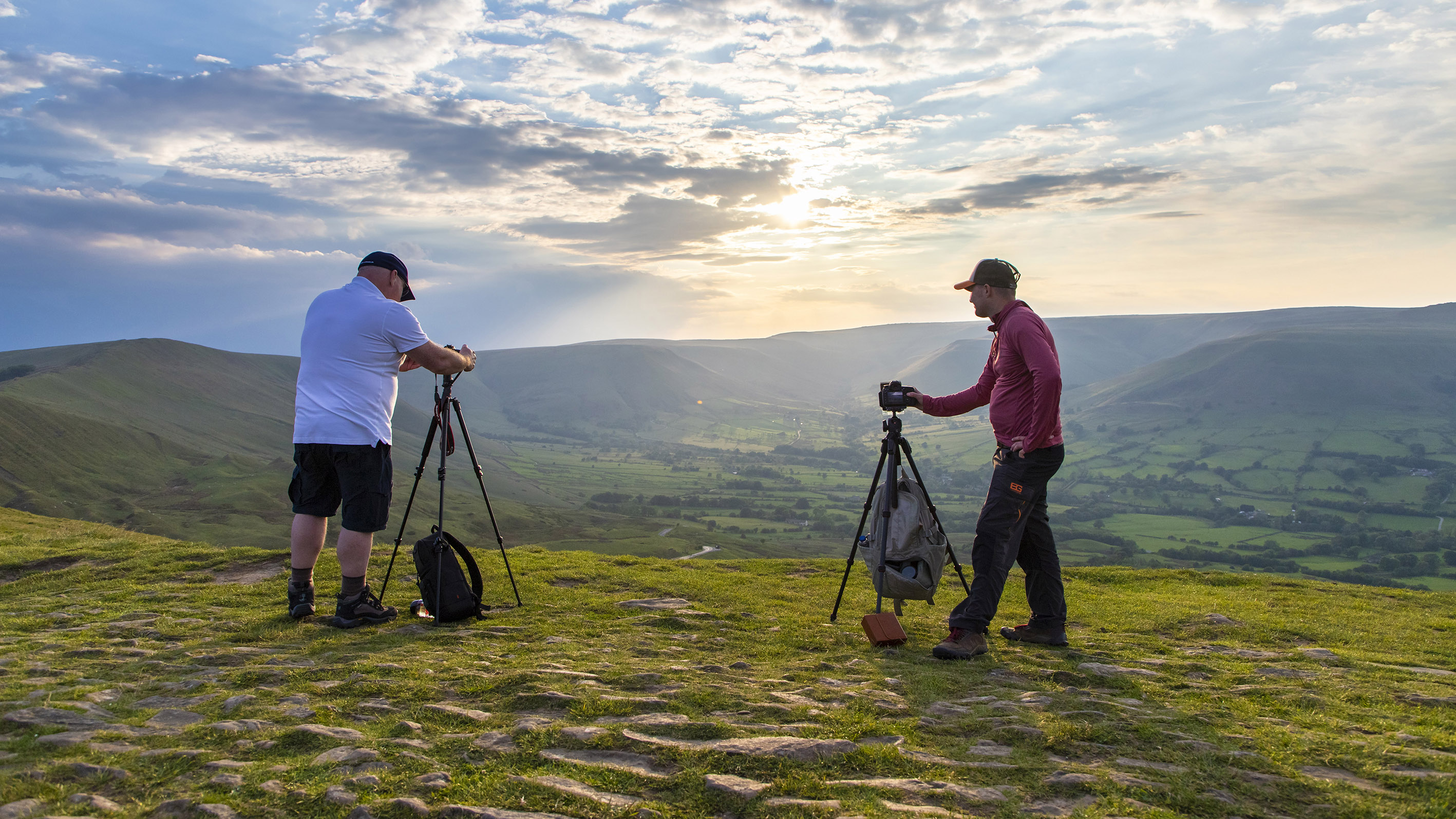Best front and rear dash cams in 2025: two-way protection for you and your vehicle
The best front and rear dash cams let you capture footage in front and behind your vehicle
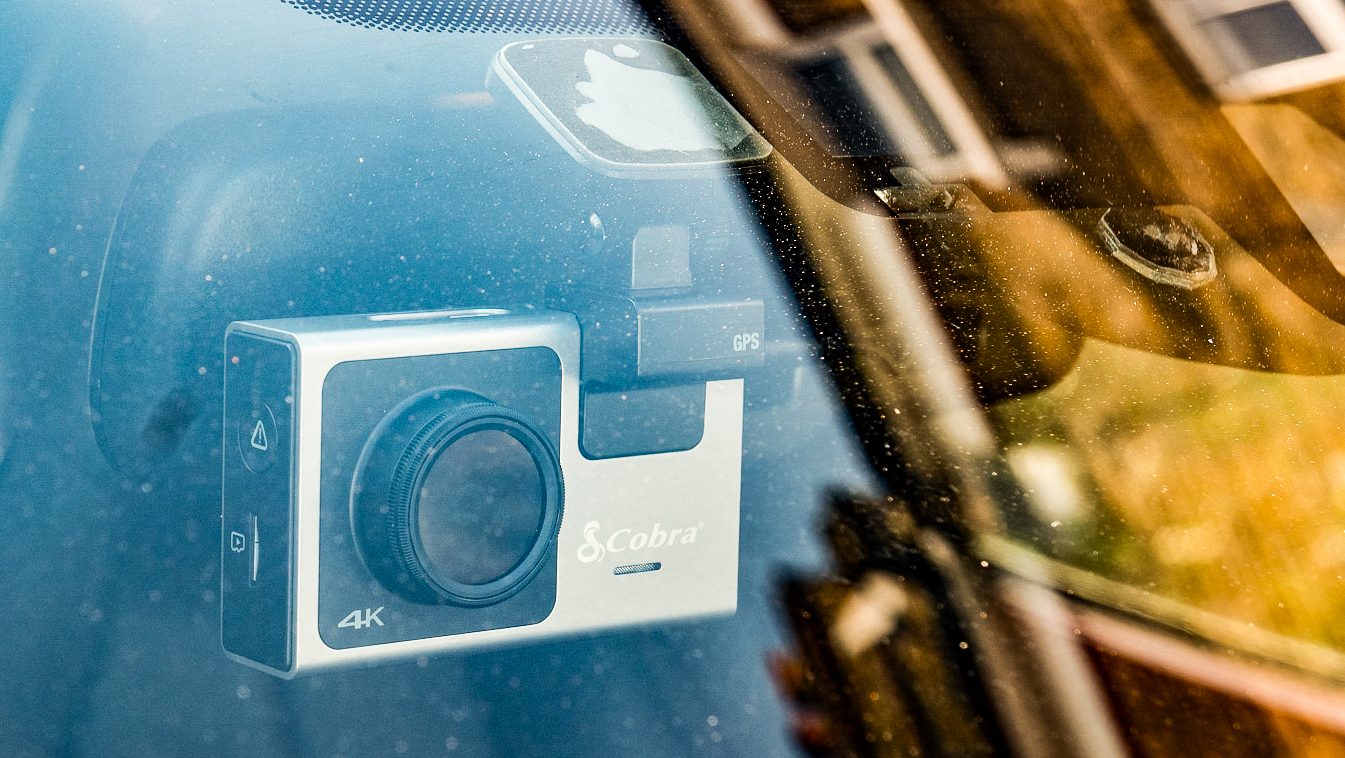
What’s better than one dash cam? Two dash cams, of course, because with a second camera you can record to the rear of your car as well as the front.
This helps to create evidence of accidents that happen behind you, such as when another driver rear-ends you.
In most cases, these so-called two-channel (or 2CH) systems include a front-facing dash cam as normal, along with a smaller, simpler camera that attaches to the rear windshield and connects to the front camera with a long cable.
The rear camera doesn’t require its own microSD card, since it sends footage to the front camera, which saves both feeds to its own memory card. The rear-facing camera tends to shoot in lower quality, owing to being smaller, but this isn’t always the case. Some of today’s more sophisticated two-channel systems record in 4K resolution forwards and rearwards.
Installing a front and rear dash cam system is more involved than simply sticking a single dash cam to the windshield. The rear camera’s cable will need tucking behind various pieces of interior trim, and sometimes behind the roof lining, to make a seamless installation. It’s often worth paying a professional to do this for you, but the results are worth it, since the two cameras will be installed neatly, as if they’ve been there since the car was built.
Since the rear camera connects to the front, it doesn’t need its own power supply. Or, it’s still possible to opt for a hardwired installation, where the front dash cam is plugged into the car’s fuse box or OBD port for a constant power supply from the 12-volt battery. This power is then sent to the rear camera too.
Although inherently more expensive than a single-camera (or 1CH) system, two-channel dash cams can be bought for under $150. Premium options with improved video quality and extra features cost anywhere from $300 to over $500.
If you want to only cover the front of your vehicle, we also have a guide to the best dash cams for single-direction recording. Then there’s also our guide to the best budget dash cams if you want to spend less money.

Alistair is a technology and automotive journalist who has reviewed dozens of dash cams over the years. Whether they are $20 or $400, he has tried and tested dash cams from companies like Garmin, Thinkware and Nextbase, as well as lesser-known brands. Every model is fitted to his car and used as if his own before it is reviewed, and then judged if suitable as a recommendations in one of our buying guides. With over a decade of experience, Alistair also writes for Wired, Forbes, T3, and The Independent. A typical week includes reviewing light switches, Lamborghinis, and everything in-between.
The Quick List
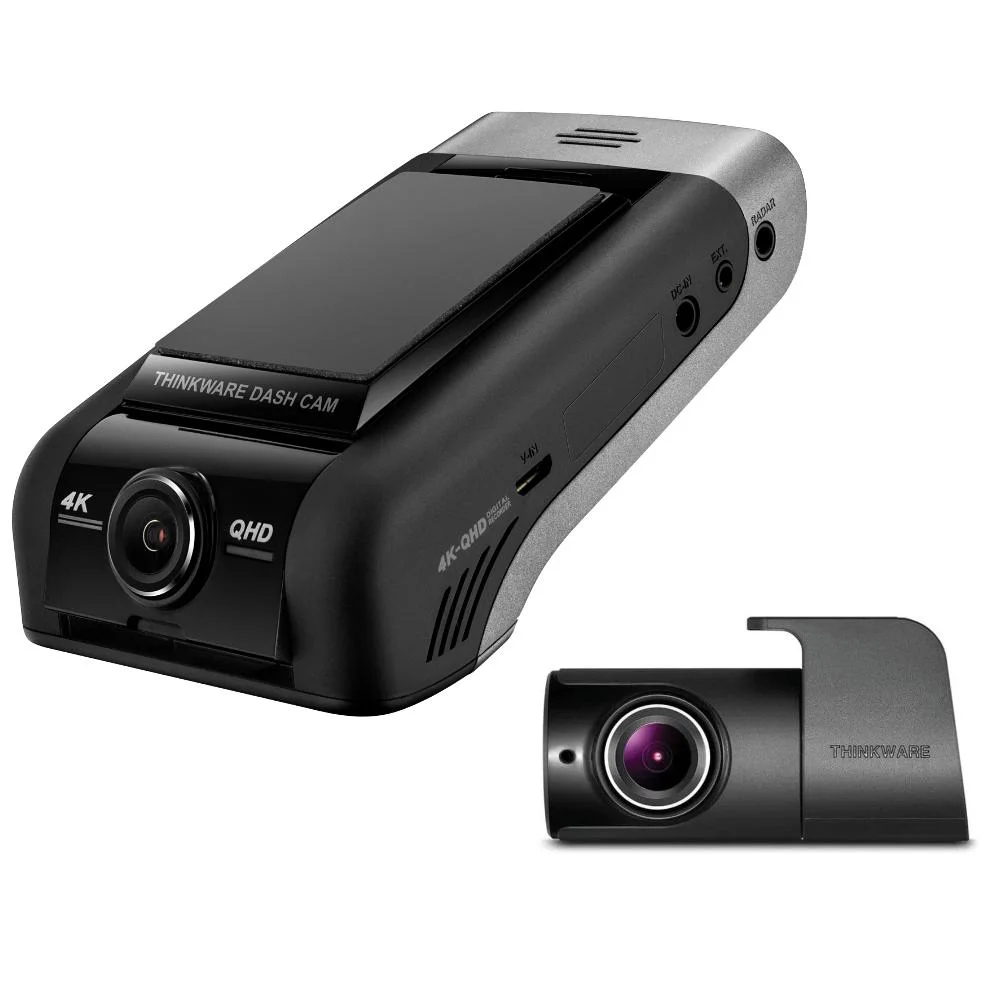
The Thinkware U1000 dash cam is a hugely impressive piece of kit that gets our top-spot recommendation. It can record footage in UHD 4K at 30fps or 2K 1440p at silky-smooth 60fps. Both are great, although opting for the lower resolution and higher frame rate can make it easier to see detail in paused frames of the footage, and keep file sizes lower.

There are an increasing number of dash cams that promise 4K video capture, but often these give disappointing results. Not so the Cobra which greatly impressed us when we reviewed it. It offers built-in Alexa support and GPS too.

This twin-camera set-up impressed us in our tests, not only offering 4K video recording to the front and out the back, but doing it all at an impressively low price. A real bargain.
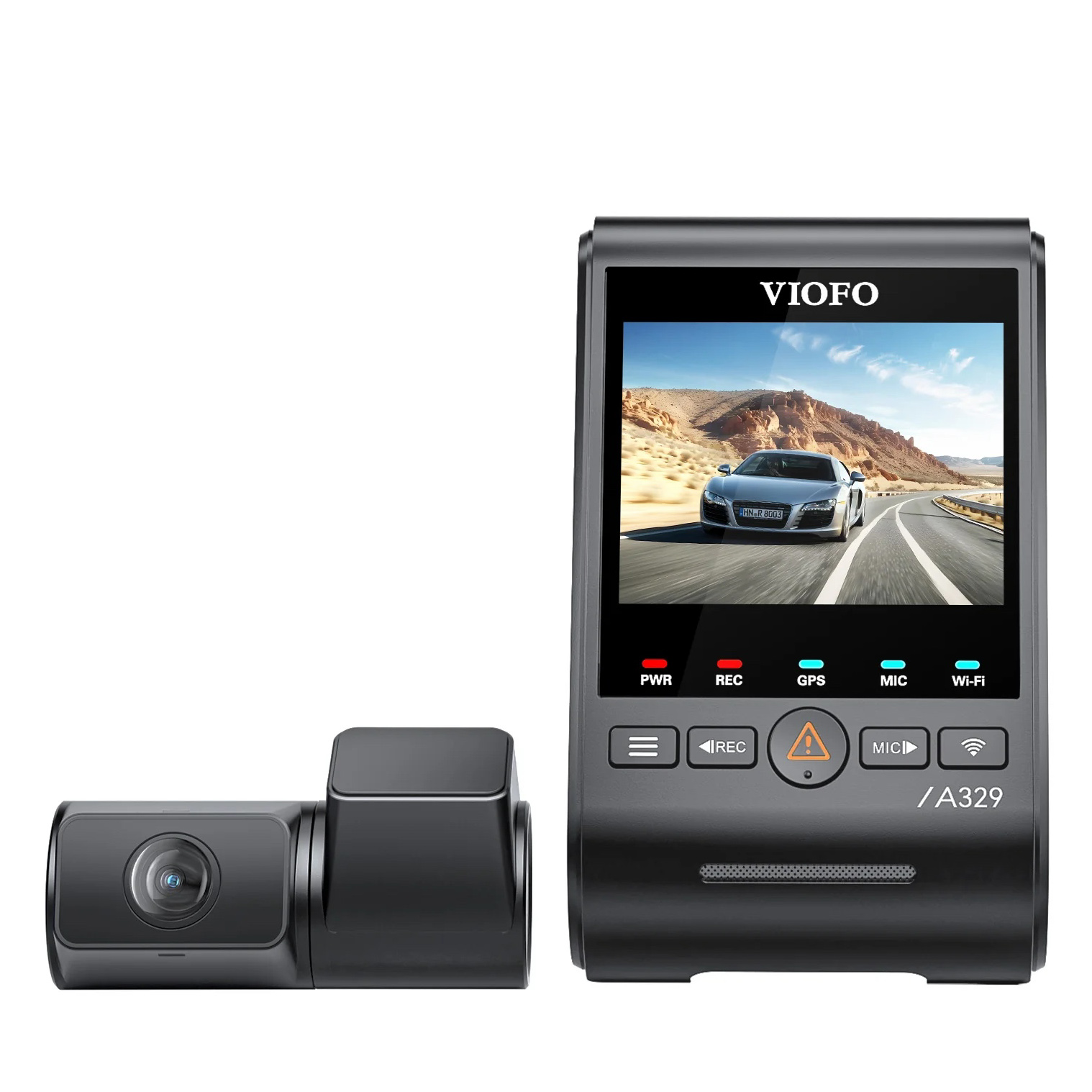
This two-channel system records 4K forwards and 2K rearwards, both with HDR. This dash cam also benefits from a pair of Sony Starvis 2 sensors for superior night vision, meaning the all-round video performance is really impressive.
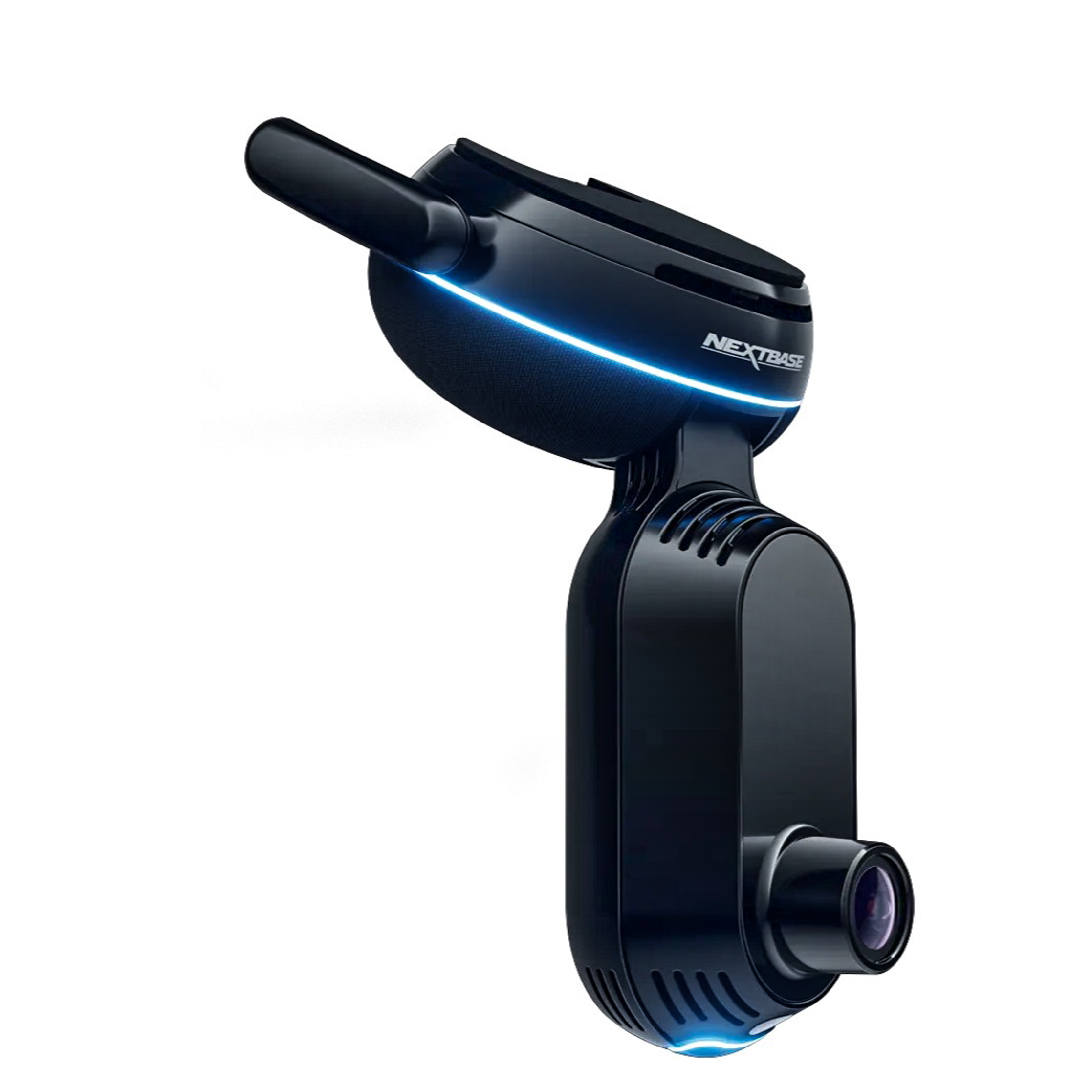
This is a luxury priced dash cam, and although it has a cabin camera as standard, you have to pay extra for the rear camera. The key selling point is 4G cellular connectivity - so you get 24/7 surveillance even when parked up.Read more below ↓

The Garmin X310 is an excellent dash cam with 4K resolution and HDR – plus it can be wirelessly synchronized with up to three other compatible Garmin dash cams, earning a place in this buying guide. Combine it with a Garmin Mini 3 for a compact but high-quality front-and-rear dash cam system.
View the full list ⤵
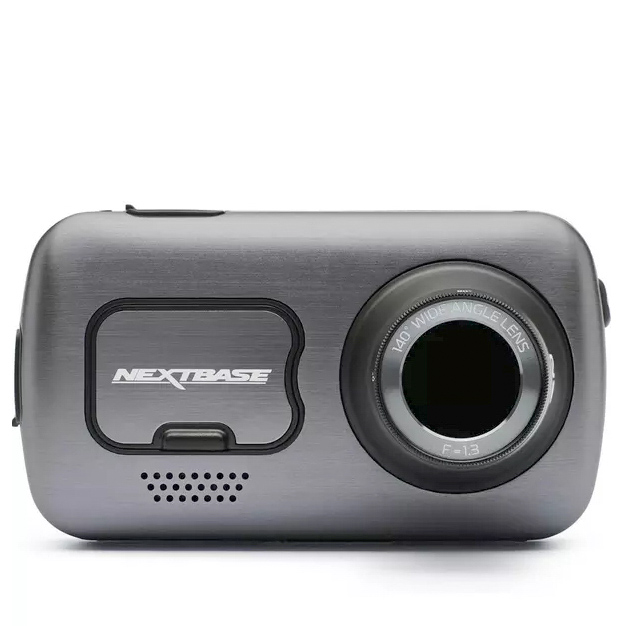
The Nextbase 622GW dash cam comes in-built with Amazon Alexa assistance. This means you can tell the dash cams to start recording, as well as ask Alexa on other devices for directions, play music, get weather updates, make a call, and so on. And as you don’t want distractions while driving, this is one situation when voice control really is handy.

This is a dash cam with a twist - as the front 4K pans through 340° to allow you to record what is going on at the sides or inside the car. The 4G hardwire kit turns this two-camera system into a 24-hour surveillance system for your vehicle.
Best front and rear dash cams
Why you can trust Digital Camera World
Best overall
Specifications
Reasons to buy
Reasons to avoid
✅ You want top-quality video: the U1000 records forwards at 4K and rearwards at 1440p
✅ You need safety camera warnings: it beeps when you’re approaching speed cameras and junctions with red light cameras
❌ You’re on a tight budget: although sometimes discounted, the U1000 kit usually costs over $300
❌ You want a screen: recordings can only be viewed on the phone app, or by transferring them to your computer
🔎 The Thinkware U1000 is a top-notch system that records high-quality video. It also has a discreet and compact design that, when professionally installed, looks like it was fitted to your car at the factory. ★★★★½⯨
The Thinkware U1000 dash cam is a hugely impressive piece of kit that gets my top-spot recommendation. It can record footage in UHD 4K at 30fps or 2K 1440p at silky-smooth 60fps. Both are great, although opting for the lower resolution and higher frame rate might make it easier to see detail in paused frames of the footage, and also keeps the file sizes lower.
This is a setup with an optional rear camera, which shoots 2K 1440p at 30fps and does so through a lens with a decent 156-degree field of view, giving you a wide latitude for seeing what's going on behind your vehicle.
I found it to be a pleasingly compact and unobtrusive unit, so won't be distracting or get in the way. Just stick it to your rear screen and forget about it.
A suite of handy features like GPS, speed-camera detection and average speed warnings make the Thinkware U1000 a tempting proposition for the vast majority of users.
It's a fairly large unit, however, and there are definitely smaller options available on this list, like the Garmin 67W, but if this doesn't bother you then it's highly recommended.
Read more: Thinkware U1000 review
Attributes | Notes | Rating |
|---|---|---|
Features | This blends great video quality (plus HDR) with GPS and useful connected features like geofencing and a parking mode. | ★★★★★ |
Design | This is the perfect, distraction-free dash cam form factor. If only it were a touch smaller… | ★★★★ |
Video quality | Fantastic. Not only does it shoot in 4K, but there’s HDR for balancing highlights and shadows, and the rear camera records in 2K – a real rarity among dash cams at all prices. | ★★★★★ |
Value | If you want both channels above Full HD, plus GPS and a decent phone app, it’s actually good value. | ★★★★ |
Best for image quality
Specifications
Reasons to buy
Reasons to avoid
✅ You want 4K and a display: it shoots at 4K, and adds in a screen for those who want it
✅ You need a wide field-of-view: few dash cams record a view as wide as this one, thanks to its 170-degree lens.
❌ You’re on a tight budget: this is an expensive dash cam set-up
❌ You’re prone to distraction: unusually, the screen of the Cobra cannot be switched off.
🔎 This is a very good dash cam that feels well made. I especially like its video quality, and the inclusion of GPS, Wifi and Alexa voice assistant. ★★★★⯨½⯨
The Cobra SC 400D is a chunky-looking front/rear dash cam, but what impressed me most was the quality of the footage from the 4K front camera.
In my full review, I noted that it is sharp, bright, and nicely balanced, with minimal grain and a great amount of detail in the recorded footage – a revelation compared to some 4K dash cams that often overpromise and underdeliver when it comes to their video performance.
The rear camera offers a slightly narrower field of view, and an inferior Full HD image quality - but there is still plenty to like here. The integrated GPS and Alexa features are particularly welcome.
Cobra isn’t as well known for dash cams as rival manufacturers such as Garmin, Nextbase and Thinkware – but I wouldn't let that put you off. It’s not as clever as the pricier Nextbase iQ, nor is it as compact as the Garmin 67W, but I think the SC 400D does a great job nonetheless.
Read more: Cobra SC 400D review
Attributes | Notes | Rating |
|---|---|---|
Features | This dash cam offers a masterclass in nailing the basics and not being distracted by adding unnecessary features. | ★★★★½ |
Design | It’s not the smallest dash cam around, but the SC 400D looks decent and feels very well made. | ★★★★ |
Video quality | It produces some of the best video I have ever seen from a dash cam. | ★★★★½ |
Value | This is a useful lesson in getting what you pay for. It‘s not cheap, but the solid build quality and excellent video make it feel good value. | ★★★★ |
Best value
Specifications
Reasons to buy
Reasons to avoid
✅ You want great value: it's a great price for a dash cam with two 4K cameras
✅ You want image quality: you get great 4K footage in all lighting conditions
❌ You want a high frame rate: This is limited to 30 fps from the front camera and just 25 fps at the rear.
❌ You want a discrete dashcam: There are smaller options without a screen that fit behind the windshield mirror
🔎 This dashcam proves that you don't have to pay a fortune to get a great set of features. ★★★★½⯨
We love that you can now find a dash cam that offers you great video quality at the front and rear without it having to spend a fortune. The Miofive impresses with its twin 4K cameras - providing detailed, high-quality footage in all driving conditions.
You get a 3in LCD screen at the rear, which allows you to control the features and review footage. Its not touch sensitive, but you do have the option to control the units using an app if you so desire. Likewise, you get the choice or recording onto a microSD, or sending recordings across to your phone. If you choose 4K, you can expect to use up 0.4GB of storage for every minute you record. That means the supplied 64GB card can fill up in four hours driving, but incidents are saved in a protected folder - so you don't need to panic about losing all-important video evidence.
There are dash cams with better design, and more high-tech features – but overall the Miofive impressed us a lot in our tests, and is a great option who want high-resolution recording at a budget price.
Read more: Miofive S1 Ultra review
Attributes | Notes | Rating |
|---|---|---|
Features | 4K footage from both cameras is the standout feature of this kit - but you get GPS and WiFi too. | ★★★★★ |
Design | Both cameras feel well built, and the menus are easy to navigate around. | ★★★★ |
Video quality | Recordings are full of detail in all lighting conditions. | ★★★★★ |
Value | We have seen som great deals on this dashcam, and for the features this is a bargain buy. | ★★★★★ |
Best in low light
Specifications
Reasons to buy
Reasons to avoid
✅ You want quality AND value: I wouldn’t say this as a budget dash cam, but I think it represents good value when you consider the specification and performance
✅ You need great night vision: 4K is all well and good, but I think what really sets this apart from its rivals is the grain-free nighttime footage from its Sony Starvis 2 sensors.
❌ You need a compact dash cam: Since it has a screen, five buttons, several ports and the hardware (& cooling) to capture two channels of video, it is chunky
🔎 It isn’t pretty, but the A329 wins over that argument thanks to its 4K video with HDR and fantastic low-light performance. ★★★★★⯨
It is the inclusion of two Starvis 2 sensors in the Viofo's two cameras that are the real performers here - providing some of the best lowlight, and night-time footage I have ever seen from a dashcam. Given few of us only drive in perfect daylight conditions, this makes the A329 justify its higher-than-average price. I urge you to look behind the slightly dated hardware design, and instead focus on these specifications, because that’s where the Viofo A329 shines brightest.
I really liked the option for 4K 60fps recordings at the front, and was equally impressed by the inclusion of HDR, which helps pull extra detail out of particularly bright and dark areas of the camera’s view. This helps it retain detail in changeable weather conditions and at night.
I also like how simple the setup process is – and especially how Viofo doesn’t demand that you create a user account, or even download the company’s app if you don’t want to. The entire setup process can be completed on the dashcam itself, which helps to keep things simple.
Read more: Viofo A229 Pro review
Attributes | Notes | Rating |
|---|---|---|
Features | From a high front and rear resolution with HDR, to high-speed Wifi, GPS, Starvis 2 sensors and support for SSD storage, this dash cam has it all. Aside from cellular connectivity – admittedly a niche feature – the A329 offers just about everything you could ever need from a dash cam. | ★★★★★ |
Design | The A329 goes some way to justify its high price with a high-quality construction and a premium, soft-touch finish. It isn’t the smallest dash cam around, but it’ll still look neat in most vehicles and its size is understandable given the display and processing power required for constant 4K front / 2K rear recording. | ★★★★★ |
Video quality | Excellent 4K video with HDR from both the front and rear camera make this two-channel system a winner. Superb nighttime clarity with very little graining is the cherry on top. | ★★★★★ |
Value | 4 stars Not cheap, but not outrageously expensive either. Especially when compared to dash cams that offer the same video quality but pack in superfluous features to pump up the price. | ★★★★ |
Best for features
Specifications
Reasons to buy
Reasons to avoid
✅ You want a security camera for your car: the iQ acts as a 4G-connected security camera, ready to alert you via a phone app and start recording the moment it spots (or feels) something.
✅ You need an interior camera too: the iQ records forwards and into the interior from the main unit. A third camera for the rear is available separately and connects with a long cable.
✅ You’re happy with paying a subscription: advanced features – like live video streaming, SmartSense Parking and automatic emergency SOS calls – require a monthly fee.
❌ You have a small car: the iQ was too large for the compact windshield of my Mazda Miata.
❌ You don’t want (yet another) subscription: the most interesting and useful features require monthly or annual payment.
🔎 If you want the best 4K front-and-rear dash cam money can buy, the Nextbase iQ is for you. Its 4G connection turns it into a security camera for your car, complete with radar and fast, reliable smartphone notifications when it spots something suspicious. I also love how it uses the OBD port as an alternative to hardwiring into the fuse box.
★★★★½⯨
It’s possibly the most expensive dash cam ever made, but it is also one of the newest and arguably the most impressive (when it works). What makes it especially useful for Uber drivers is how, like the Garmin Dash Cam Tandem, every version of iQ (with 1K, 2K or 4K front cameras) comes with an integrated interior camera with Full HD video and infrared night vision.
A rear camera is also available as an optional extra. All three save footage to a microSD card, or with a subscription you can have footage automatically uploaded to the cloud via the iQ’s 4G connection. This is also used to notify you via the Nextbase smartphone app when the iQ detects a parking prang or attempted theft. And I love that the camera cleverly receives a constant power supply from your car’s OBD II port - a much neater, easier solution than the hardwiring required for other dash cams.
Constant power and 4G means this is a dash cam that also doubles as an in-car security camera, ready to stream footage to your phone from anywhere in the world.
Nextbase promises a steady supply of over-the-air software updates and new features are coming to the iQ soon, including radar-powered vehicle monitoring that uses artificial intelligence to estimate the speed and trajectory of every vehicle within its sight; this data is then added to recordings to help show who caused a collision. The radar is also used to alert you if the iQ spots a potential thief loitering by your unattended car.
The iQ is large, expensive, and has ongoing subscription costs to consider, but if you want the very best front and rear dashcam, it’s hard to ignore.
Read more: Nextbase iQ review
Attributes | Notes | Rating |
|---|---|---|
Features | The iQ ticks every box imaginable.. From 4K video and interior recording, to GPS, 4G connectivity, a clever parking mode, and even the ability to track the speed of vehicles around you, | ★★★★★ |
Design | All those features take up a fair bit of space. The iQ is designed to fit behind the central mirror, but this isn’t possible on small cars | ★★★★ |
Video quality | There are three versions of iQ, but the 4K flagship produces excellent footage that is sharp, with accurate colors and packed full of detail. | ★★★★★ |
Value | There’s no getting away from how expensive the iQ is. Go for the 4K model, add in the optional rear camera and you’re looking at close to $900, plus the subscription. | ★★★ |
Best for expandability
Specifications
Reasons to buy
Reasons to avoid
✅ You want excellent video quality: whether you choose 4K at 30 fps or Full HD at 120 fps, the results are fantastic.
✅ You’d like a parking mode and remote surveillance: these are great added features, but require ongoing subscription fees.
✅ You want wireless expandability: Garmin’s clever syncing tech lets you add up to four dash cams to one vehicle.
❌ You’re on a tight budget: this is an expensive dash cam.
❌ You want a tiny dash cam: its compact, but not small
❌ You haven’t got plenty of power sockets: you need a power output for each camera
🔎 The Garmin X310 is a fantastic 4K dash cam that produces high-quality video. However, while it can be connected wirelessly to up to three other Garmin dash cams you have to buy each separately and each requires its own power supply.
★★★★★⯨
Garmin’s latest flagship dash cam, the X310 is a world-class product. It records 4K video at 30 fps – but, perhaps more usefully, it also has an option for capturing 1080p at a super-smooth 120 fps. It also has HDR for dragging extra detail out of shadows and highlights.
New for this generation of Garmin dash cam is an integrated polarizing lens, which helps to reduce windshield reflections, and if you pay a subscription (and hook the dash cam up to a data connection) you can access it remotely, turning the X310 into a security camera for your car.
What else? We think the X310 looks great and is surprisingly compact given the specification on offer. It even has a 2.4-inch touchscreen on the back, making it easy to adjust settings and view recordings before transferring them to your phone for a closer look. Factor in the small and simple but highly adjustable windshield mount, and the X310 is a fantastic dash cam.
Although Garmin doesn’t sell a dedicated rear camera, its dash cams can be wirelessly connected using the company’s Drive app. That means you can buy an X310 and a Garmin Mini 3, for example, and create your own front-and-rear dash cam system – just remember though, each camera needs its own power supply, which could be a problem in some vehicles.
It’s not cheap, and to access all of its features you’ll need a subscription, but the X310 remains one of my favorite dash cams to date.
Read more: Garmin Dash Cam X310 review
Attributes | Notes | Rating |
|---|---|---|
Features | With 4K video, HDR, a polarizing filter and a touchscreen, the X310 is packed with features that are as powerful as they are useful. There’s the option for more too, with support for a parking mode, remote surveillance and the creation of a four-camera system. | ★★★★★ |
Design | Compact but with a real sense of quality, the X310- is a high-end dash cam with the hardware to justify its high price. | ★★★★★ |
Video quality | The X310 produces excellent video, day and night. The polarizing filter really does work to reduce windshield reflections, and the 120fps option produces silky smooth slow-motion video. | ★★★★★ |
Value | It isn’t the cheapest dash cam around, but I think the X310 justifies its lofty price tag - but each extra camera adds significantly to the cost of the system | ★★★½ |
Best for Alexa-integration
Specifications
Reasons to buy
Reasons to avoid
✅ You want LOTS of features: from SOS emergency calling and what3words support, to GPS, support for multiple cameras, parking mode and a polarizing filter, this dash cam has everything you could ever need.
✅ You want a high frame rate: 4K video is nice, but I prefer switching the Nextbase 622GW to 1080p because that boosts the frame rate from 30 to 60 fps.
❌ You want simplicity: there’s a lot to get your head around here. My advice is, if you can’t see yourself using all of the features, get a simpler dash cam.
❌ You have a firm-riding car: the dash cam’s image stabilization can work well, but in stiffer cars it interferes too much for my liking.
🔎 The Nextbase 622GW is an all-singing, all-dancing dash cam packed full of features. If that’s what you want, then it’s just about perfect. It also boasts 4K video, the option for 120 fps (at 1080p) and a potential life-saver in the SOS emergency calling function. ★★★★½⯨
It might look like a fairly regular dash cam at first glance, but the Nextbase 622GW is absolutely packed with features. Compact, and with what I think is a well-designed magnetic mount, the 622GW features 4K video recording, GPS, and a function that automatically calls the emergency services and shares your location if the driver is unresponsive after a heavy crash.
There’s more. It also has support for what3words, the system for precisely pinpointing your location when local maps and data coverage aren’t up to the job, and there’s integrated Alexa, the Amazon voice assistant.
A secondary rear camera can be attached via a long cable, in the traditional manner, or Nextbase also sells a rear-view camera that attaches directly to the side of the 622GW. In fact, it actually sells two such cameras; one with a zoomed-in view for recording through the rear window, and another that records the interior. You can only fit one of these at a time, however.
Other features include digital image stabilization, which I’ve found can be handy if your car has a firm ride and tends to create shaky dash cam footage, and the option to record at 120 frames per second. This knocks the front camera resolution down from 4K to Full HD (1080p), but I like how the high frame rate can produce smoother footage.
I was less impressed by the clunky smartphone app, but as with most dashcams, this is only needed while setting everything up, and then can be cast aside.
Read more: Nextbase 622GW Dash Cam review
Attributes | Notes | Rating |
|---|---|---|
Features | A dash cam with everything you could possibly want. If you won’t use them, get something cheaper. | ★★★★½ |
Design | This is a nicely designed dash cam with a clever magnetic windshield mount and a sense that it’s been built to last. | ★★★★ |
Video quality | 4K at 30 fps is great, but I prefer to lower the resolution to Full HD at 120 fps, which is super-smooth and helps make details like street signs easy to spot in paused footage. | ★★★★½ |
Value | You’re looking at between $400 and $500, so this certainly isn’t cheap. But it still offers decent value. | ★★★★ |
Best 360° dashcam
Specifications
Reasons to buy
Reasons to avoid
✅ You want 24h security: with the two cameras and the optional 4G hardwire kit, you have a system that gives you constant surveillance without any monthly fees
✅ You want a camera that pans: the motorized front camera can be swung round to observe things going on inside or outside the vehicle
❌ You want 4K rear footage: the rear camera is only Full HD
❌ You want something discrete: the front camera unit is bulky, despite only having a small 1.4in screen
🔎 The 70mai 4K Omni offers something different from its rivals, thanks to its rotating camera. Coupled with the hardwire kit, you get a 24h 4G surveillance system. ★★★★
I review a lot of dash cam, but the 70mai 4K Omni has a defining feature that makes it stand out from the rest: a motorized, 360-degree viewing capability.
This isn’t your average static dash cam; the unit can physically spin through 340 degrees to look left, right, or even back into the cabin via voice command. While it’s a neat trick for recording that interesting car in the next lane, or a serious tool for filming an interaction with a police officer, its true value unlocks when the car is parked. The rear camera is optional – but essential for recording the road behind you – so is usually included in the kit (but do check).
With the optional hardwiring kit, the Omni transitions into a superior security camera with 4G cellular connectivity. Its parking mode allows the main front camera to pan and follow suspicious movement around the vehicle, and it can send me an alert via 4G. The rear camera is essential here, providing constant coverage of the back.
However, here's the crucial detail about the "360-degree view": the front camera is motorized, but the rear camera is a simple, static Full HD unit. This means the front unit will actively track a suspicious person who approaches the car from the front or sides, but if someone approaches solely from the rear, the system won't pan to follow them and you won't get the immediate 4G alert for motion tracking. The rear camera will record the event if a collision happens, but the comprehensive, active 360-degree security is disappointingly incomplete.
See our full 70mai 4K Omni review
Features ★★★★☆ | From its 4K video with HDR, to the motorized movement and option for 4G connectivity, the 70mai 4K Omni is a dash cam that’s packed with features. Some might feel like overkill to buyers looking for a simpler experience, but if you want a data connection and a camera that pans to follow suspicious activity close to your car, this is the dash cam for you. |
Design ★★★★☆ | It’s on the larger side, and the height of this dash cam could be problematic for drivers of smaller cars with shallow windshields. Otherwise, it feels well made and is easy to set up and use. |
Performance ★★★★☆ | The 4K video recorded by this dash cam is especially good. Bright, sharp and clear, it is packed with detail, but suffered from noticeable horizontal movement, especially in cars that ride more firmly than average. |
Value ★★★★☆ | The 4K Omni is certainly on the expensive side, especially if you add in a rear camera, hardwiring kit and the ongoing expense of a 4G data connection. That said, it’s still more affordable than some other connected dash cams with 4K imaging, like the Nextbase iQ. |
How to choose the best front and rear dash cam
The same rules apply here to most other types of dash cam. You of course need to pick a system that works with a secondary, rear-facing camera. Sometimes these are included as part of a bundle, other times you can buy the second camera separately.
After that, you’ll want to strike the best balance you can between your budget and a dash cam that offers high quality video with a resolution of at least 1080p (Full HD), ideally with HDR and perhaps also a frame rate about 30 fps. After that comes the design of the dash cam – does it fit neatly behind the rear view mirror?; is the rear camera also compact and easy to install in your vehicle? – and finally we suggest buyers look at additional features. These can include speed camera alerts, but also functions like the SOS emergency calling of the Nextbase 622GW, or the always-on 4G connection of a Nextbase iQ.
Ultimately, your choice will come down to whichever dash cam offers a front-and-rear system with the best video quality for your budget.
Our overall favorite front and rear dash cam is the Thinkware U1000. We’re big fans of the 4K video of the front camera, but also love how the resolution can be lowered to 1440p in favor of a higher 60fps frame rate. The rear camera is Full HD at 30 fps, and we like how the main unit lacks a display, making it relatively compact and discreet when installed.
Other favorites include the hugely capable (but equally expensive) Nextbase iQ, as well as the Cobra SC 400D for its excellent video quality, and the Garmin 67W for the company’s clever way of wirelessly linking up to four dash cams at once. Dash cams from Viofo always offer great value, and the A129 Pro Duo featured in this guide is no exception. For a dash cam packed with features, including emergency phone calling in the event of a heavy crash, Alexa and support for what3words, we highly recommend the Nextbase 622GW.
Can all dash cams work with a second camera?
Most do, but not all. You should check carefully that the dash cam you want to buy can be connected to a rear-facing secondary camera. We recommend buying a two-camera kit, so that you can be certain the two cameras will connect and work together.
In some cases there are multiple rear camera options available. For example, the Nextbase 622GW featured earlier can be fitted with a camera that plug directly into its side, then records a zoomed-in view through the rear windscreen. That way, there[s no need to run a cable to a camera stuck to the rear screen itself. Alternatively, an interior camera can be connected directly to the 622GW, while a rear-view camera can be attached via a long cable.
Up to four of Garmin’s dash cams can wirelessly connect to each other, then record four streams of synchronized video. This can be a nice alternative to running long cables to the rear screen, but each camera requires its own power connection.
Do front and rear dash cams require professional installation?
No, but in some cases it can make a big difference. This is especially true with front-and-rear systems, since they include a long cable that connects the main unit on the windscreen to a secondary camera on the rear screen. It can be difficult to route this cable neatly around the interior or your car, and while not impossible for an amateur – most dash cams come with a tool for tucking the cable into gaps between and behind interior panels – a professional might well do a neater job.
This is assuming you plug the dash cam into a 12V socket or a USB port. If you want to hardwire the camera, this involves attaching it to the car’s fuse box for a constant source of power, and unless you are a competent home mechanic, we recommend paying for professional installation. With that complete, the dash cam (and rear camera) will be neatly installed, automatically turn on when the car is powered up, switch into parking mode when it’s turned off, and look like it was installed when the car was built.
Do any front and rear dash cams record in 4K?
Yes. Some dash cam systems record 4K video (also known as 2160p), but only with the forward view. There are currently no systems that record 4K to the rear.
Systems that shoot forward-facing 4K include the Thinkware U1000 and the Nextbase iQ, with the latter also available in cheaper 1080p and 2K (also known as 1440p) guises.
In some cases, the front camera’s ability to shoot in 4K is removed when a rear camera is connected, because of the processing power required when running two cameras at once. You might also see a drop in frame rate for the front camera when a second is installed, often from 60 frames per second to 30. Carefully check the specifications of a dash cam – and check if this changes when a rear camera is connected – before making your purchase.
Ultimately, Full HD is acceptable, 1440p (also known as 2K) is preferable, and 4K is a luxury only found in today’s most expensive dash cams. Be sure to avoid cheaper, sub-$150 models claiming to offer 4K, because the pixel count is true but the video quality is far from cinematic.
How we test front and rear dash cams
Every dash cam featured in our buying guides is installed and tested thoroughly. I fit each dash cam to my car and use it as if it is my own, logging into the smartphone app (where necessary) and using the camera for every journey. I test the dash cams at day and night, adjust their video settings, and look at any additional features they have.
Dash cams cannot be hardwired for every test. Instead, they are plugged into the 12V socket of my car – or the OBD port, as is an option in some cases – and the cables are tucked away as neatly as possible. How a dash cam is hardwired to the fuse box varies by car, so isn’t included as an assessment criteria for our reviews and buying guides.
Naturally, I cannot truly test the crash detection of these cameras, but endeavor to try out every other feature and function before reaching a verdict.
Today's prices compared
The best camera deals, reviews, product advice, and unmissable photography news, direct to your inbox!
Alistair has been a journalist since 2011 and used to be Deputy Technology Editor at IBTimes in London. His specialist tech subjects include smart home gadgets, phones, wearables, tablets and dashcams. He is the host of The AutoChat Podcast.
